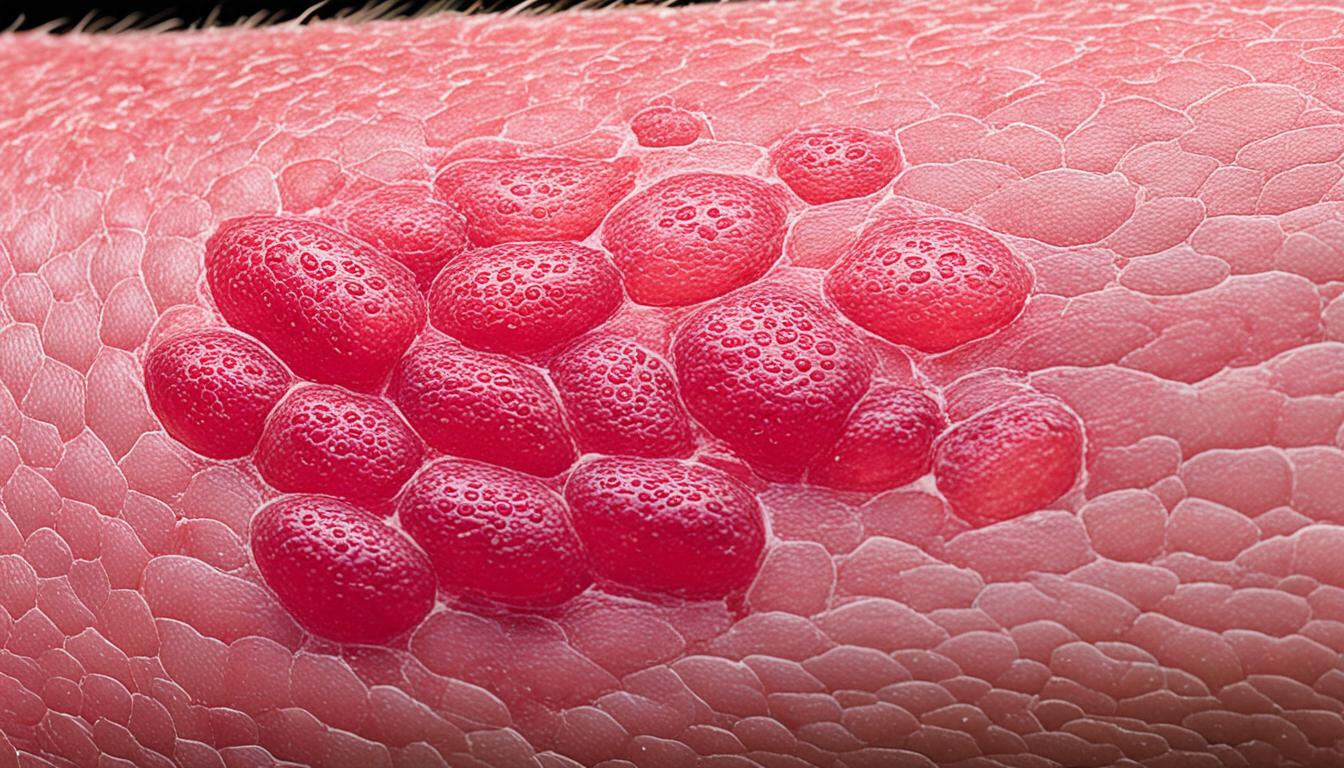Scabies is a highly contagious skin infestation caused by Sarcoptes scabiei var. hominis, a type of mite. It causes skin inflammation and strong itching. Diagnosing it can be hard because it looks like other skin issues. Worldwide, there are about 300 million cases each year. Scabies can happen to anyone, but is more common in children and the elderly.
The mites love hot, crowded places like schools, villages, and even prisons. This makes scabies more common in low-income areas and among remote Indigenous communities. To prevent and control scabies, quick and accurate diagnosis is essential.
Key Takeaways
- Scabies is a highly contagious skin infestation caused by the Sarcoptes scabiei mite.
- It causes skin inflammation and intense itching.
- Diagnosing scabies can be challenging due to its similarity to other skin conditions.
- About 300 million cases of scabies occur worldwide annually.
- The mites thrive in hot, crowded environments and can affect people of all ages and socioeconomic levels.
Scabies must be diagnosed and treated quickly to avoid spreading. In the upcoming sections, we will explore how to diagnose scabies. We will also look at the treatments available, including the use of stem cell therapy.
Diagnosis and Treatment Options for Scabies
Diagnosing scabies can be hard because it looks like other skin problems. But, doctors have ways to tell if it’s scabies.
- Direct smear: Doctors take a sample from the skin’s affected area. They look at it under a microscope. This can show if scabies mites are there, meaning it’s scabies.
- Skin biopsy: Sometimes, doctors take a little bit of skin to look at closely. This helps them see the mites or their eggs more clearly.
After confirming scabies, doctors will suggest the best treatment.
| Treatment Options | Description |
|---|---|
| Topical creams: | Special creams like crotamiton, permethrin, or benzyl benzoate kill the mites and their eggs. You’ll put these creams everywhere below your neck and wait a bit before washing them off. Always follow your doctor’s advice. |
| Oral medications: | If the scabies are really bad or the creams don’t work, you might need pills like ivermectin. These medicines get rid of mites in your whole body. |
| Treating close contacts: | It’s important to treat everyone close to you, even if they don’t seem sick. This stops the mites from spreading. |
Along with medical treatment, some simple things at home can also help:
- Washing bedding and clothing: Use hot water to wash your sheets, clothes, and towels. This kills any mites or eggs. To be safe, do this separately.
- Vacuuming: Use a vacuum cleaner on your furniture and carpets. This gets rid of mites or eggs that might be there.
- Isolating personal items: Don’t share things like combs, brushes, or hats with others if you have scabies. Keeping them to yourself helps stop the mites from spreading.
Stem Cell Therapy for Scabies and Future Outlook
Stem cell therapy is a new way to fight scabies, a very contagious skin problem. It’s caused by the mite Sarcoptes scabiei var. hominis. Researchers are studying how stem cells could help get rid of scabies.
The World Scabies Program leads the fight against this disease worldwide. They use large medication handouts in places such as Fiji and the Solomon Islands to stop scabies.
The World Health Organization has named the Tropical Diseases group at Murdoch Children’s Research Institute its first Collaborating Centre for Scabies Control. Their main goal is to get rid of scabies and make the health of those affected better.
Thanks to ongoing research and new treatments like stem cell therapy, we are hopeful. We believe we can control and even wipe out scabies. The future of scabies treatment looks bright for anyone suffering from this common skin issue.

